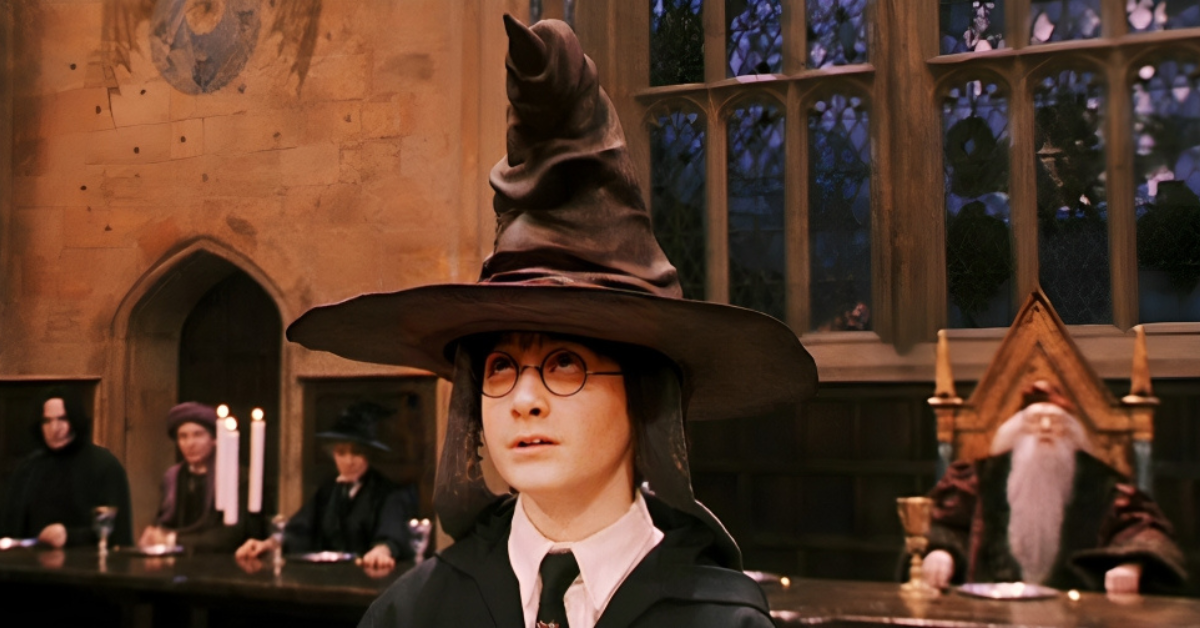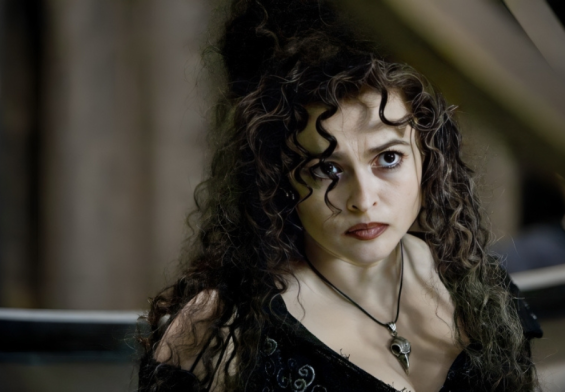
With Back to Hogwarts Day fast approaching, I started thinking about all of the young witches and wizards who will experience the wizarding world for the first time. For many of them, it will be their first time at Platform 9¾, their first time on the Hogwarts Express, and their first time walking through the front doors of Hogwarts School.
Recommended for You:- Why Albus Dumbledore Could Have Been a Slytherin
- Why Are Modern Witches and Wizards So Weak?
- Why Ravenclaw’s Mascot is an EAGLE and not a RAVEN?
- Why Didn’t Fred and George Notice PETTIGREW on the Marauder’s Map?
The Sorting Hat: A Key Integration Process
One key aspect of this integration process that got me thinking is none other than the Sorting Hat. Shortly after entering the Great Hall, each of these new first-year students will be required to place the fabled hat upon their head. The hat, which has the unique and essential task of assigning new students to one of the four houses, will place each new student into Gryffindor, Hufflepuff, Ravenclaw, or Slytherin.
For the most part, this process runs pretty smoothly, with students being sorted across the board. But what if, for some strange reason, things didn’t go quite as smoothly as they usually do? What if the sorting process led to a completely disproportionate number of students in one house? Or better yet, what if one or more houses had no new students at all?
Diving Deeper into the Sorting Ceremony
Today, we’re tackling all of that and more as we dive deeper into the sorting ceremony. Hey everyone, welcome to another installment of Harry Potter Theory. After the Hogwarts founders established the school, they quickly realized that they would need to create some kind of system for dividing the school’s students, and so the house system was born.
- Gryffindor: Bravery and chivalry
- Ravenclaw: Intelligence and wit
- Hufflepuff: Loyalty and fair play
- Slytherin: Slyness and cunning
The founders were wise enough to recognize that they were very different people who valued very different things. This meant that dividing their teaching ideologies was of utmost importance.
The Origin of the Sorting Hat
The Hogwarts founders manually sorted students into their houses for many years. But when they realized they wouldn’t be around forever, they needed a way to continue sorting students after their time. This prompted Godric Gryffindor to take his completely normal hat off his head and suggest to the other founders that, using their collective magic, they enchant the hat and turn it into a sentient being capable of sorting students.
It was of utmost importance to the founders that the houses they formed would continue to follow the beliefs upon which they were based. After placing the Sorting Hat on your head, the hat analyzes your mind using legilimency and places you in a house based on how closely you resemble one of the four founders.
The Sorting Hat’s Role Over the Years
The hat made things much easier, and it couldn’t have come at a better time, as the founders were beginning to have a bit of a falling out, with Slytherin eventually leaving the school altogether. Since that day, the Sorting Hat has been passed down to each new headmaster or headmistress of the school, carrying on its duties at each September start-of-term feast.
- First-year students are lined up
- Names are read aloud alphabetically by last name
For the most part, the hat is a foolproof way of sorting students. For millennia, it has faithfully done its job, sorting students into each of the four houses.
The Sorting Process: Perfect Balance or Random Distribution?
However, my issue is this: with each batch of new students, there is no way that the sample represents a totally proportionate number of students from each house.
The Book of Admittance and Quill of Acceptance
The Book of Admittance and Quill of Acceptance were artifacts put in place by the founders of Hogwarts to aid with and automate the Hogwarts selection process. They knew that for centuries, they would need students to be selected for the school, and that there would be no way to manage it manually. At the precise moment that a child first exhibits signs of magic, the quill, which is believed to have been taken from an augury, floats up out of its ink pot and attempts to inscribe the name of that child upon the pages of the book.
This means that as soon as a child shows any form of magic, it is immediately set in writing that they are a magical being. No child would be able to perform magic undetected without this magical book and quill taking note of it.
Student Distribution Across Houses
If Hogwarts has an equal number of students from each house every year, are we supposed to believe that the entire magical population is split equally into quarters as far as personality is concerned? And if not, are we supposed to believe that these magical artifacts consider personality to such an extent that an equal number of students is guaranteed in each house?
So, what’s going on here? Is there a possibility that every new student could be sorted into one house? And if the hat must maintain proportional house distribution, would the last student being sorted end up in a house they don’t truly belong in, simply because it’s the only one with an opening?
Hogwarts Student Numbers: Fact or Fiction?
The first thing I want to look at is how many students we’re dealing with here. In an interview, Rowling was once asked how many students attend Hogwarts and how many students are there in each house. To which Rowling replied, very to the point, “There are about a thousand students at Hogwarts.”
- 250 students per house
Unfortunately, I don’t think this figure makes much sense. In both the books and films, there is nothing that appears to indicate such a large number of students, and this number heavily conflicts with the world that we have been introduced to.
A More Realistic Student Count
Hogwarts students attend the school for seven years, which means that, based on the figure of 1,000 students total, there would be approximately 36 new students from each house per year. If there are an equal number of boys and girls, that would mean 144 students (72 boys and 72 girls) start at Hogwarts each and every year.
A more widely recognized figure, or at least a more widely fan-appreciated figure, is that there are 280 students at the school total. That’s 70 students from each house, and 10 new students per house per year. I think this figure seems more within the realm of possibility, with 40 new first years awaiting sorting each year. However, I can only imagine the ruckus among heads of house if all 40 of these students were to be placed into just one house.
Sorting Hat’s Flexibility and Quota Myths
I want to start off by saying that I do not believe there is any parameter in place that ensures an equal number of students in each house. From as early on as the Book of Admittance and Quill of Acceptance, it’s clear that there is no formula for detecting magical beings. It just wouldn’t make sense that a perfect number of students from each house would be detected by the book and quill each year.
Secondly, it’s worth considering that this was Godric Gryffindor’s hat, and the charm placed upon it gave it some degree of flexibility with regards to the sorting. Therefore, I do not believe there was ever any motive to equally distribute students.
The Sorting Hat’s True Role
I don’t think the hat follows any particular restrictions, and instead just operates on what it feels is best for the student and the school. If the hat was designed to place students equally into the four houses, it would also negate the entire process. The hat is supposed to use legilimency to analyze each student’s mind and determine which house is best for them based on the founding principles of each house. If there was a quota to fill, this would completely undermine the entire process.
In reality, the Sorting Hat has no idea where the student will be sorted until it’s placed upon their head and begins to analyze their thoughts. Sometimes, the hat announces a pupil’s destined house without barely touching the hair on their head. Other times, minutes go by before it shares where a student should be placed. There’s even a name for instances where it takes the Sorting Hat longer than five minutes to decide on a student’s house: Hatstall.
The Conclusion: Flexibility in the Sorting Process
Regardless of how long it takes the Sorting Hat to come up with an answer, it does indeed provide one, and no one ever thinks twice about the outcome. Whatever the hat says, goes. If there were quotas to fill, none of this would make any sense, including hatstalls.
So, what is the answer to this question? I think that, yes, it’s entirely possible that in a given year, every single student could be sorted into just one of the four Hogwarts houses—40 Gryffindors, 40 Slytherins, 40 Hufflepuffs, or 40 Ravenclaws.
Polls and House Distribution
Even by just looking at polls online, we can clearly see that the Hogwarts houses are not entirely proportional. Although one thing worth mentioning here is that people are not always entirely truthful when it comes to revealing which house they were truly sorted into.
However, the likelihood of these houses being so severely disproportionate that it disrupts the school, ceremony, and everything else seems incredibly unlikely. I believe that the distribution of values among the four Hogwarts founders is intended to represent broader archetypes within society. They are not meant to be strictly divided but rather to reflect the diversity and complexity of human nature.
The Rich Diversity of Hogwarts
It’s through the diversity of these traits within the student body that Hogwarts is able to foster a rich environment for growth, learning, and camaraderie. While the sorting process may have the goal of balance among the houses, it is ultimately the individual values and qualities of each student that contribute to the unique tapestry of Hogwarts School of Witchcraft and Wizardry.
In an ideal world, the population would be evenly divided among individuals who embody the qualities of the four houses. But these things can’t always be the case, and it’s always best if things develop organically. While one house may receive more new students in a particular year, it’s equally probable that the following year they may receive fewer students, ultimately balancing out the student body as a whole.
Let me know down in the comments section below.



